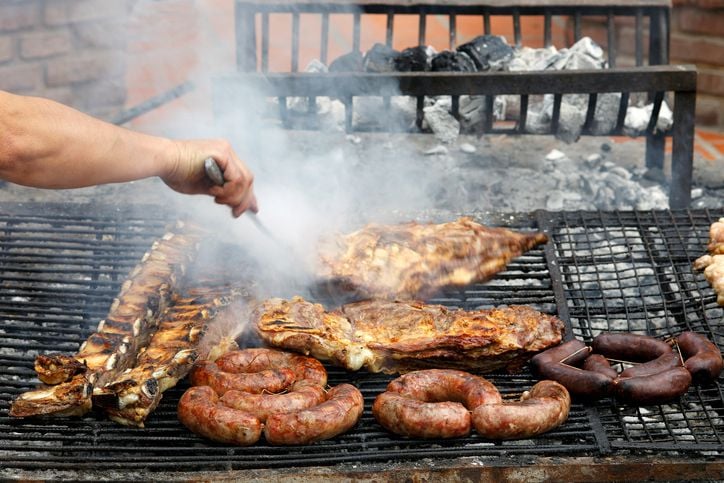Do you know your bombilla from your parrilla or the history behind the most symbolic of all Argentina traditions, tango?
Formed, molded and remade across the centuries, they bear testament to the rich cultural blend of the Latin American and European cultures that make up modern-day Argentina. As a result, this country’s fascinating range of traditions and customs give a real insight into the lives of its people.
Argentina traditions: Tango
First danced on the streets of San Telmo and other working-class neighborhoods in Buenos Aires in the 1800s, tango is probably the most famous of all the Argentina traditions.
 At the time, the rich diversity of people living in the city, from the African Argentineans, to those of Caribbean heritage and the various different groups of European immigrants, combined to create a unique new dance. As a result, tango came to symbolize an exotic cultural mix.
At the time, the rich diversity of people living in the city, from the African Argentineans, to those of Caribbean heritage and the various different groups of European immigrants, combined to create a unique new dance. As a result, tango came to symbolize an exotic cultural mix.
Becoming a worldwide dance phenomenon in the early 1900s, tango has since grown from its humble origins to become Argentina’s most symbolic dance. When visiting the country, spend an evening in a milonga (a tango dance hall) or watching couples dancing gracefully on the streets of the capital to truly capture the spirit of this important part of Argentine culture.
Argentina traditions: Yerba mate
This bitter, caffeinated drink is made of herbs steeped in hot water and drunk from a specially designed cup made from gourd, the mate, and drunk through a metal straw, known as the bombilla. Another iconic feature of Argentine customs and tradition, you won’t travel far without seeing local people partaking in a few rounds of mate.
Consumption of yerba mate dates back to the pre-Colombian era where it was first drunk in parts of Argentina, Paraguay and Uruguay. It was renamed “hierba del demonio” by the conquistadores, perhaps in reference to its stimulating powers.
Traditionally, yerba mate is drunk in company, with the person responsible for filing the gourd known as the el cebador or la cebadora. After each refill, one member of the group is offered to drink the mate before it is returned to the cebador. Custom dictates that you don’t touch the bombilla and must always point it in the direction of the next recipient!
Argentina traditions: Parrillas
Another well-known Argentina tradition is the parrilla or asado. Considered not just a style of cooking but an art form, there are several rules for how to conduct a proper bbq. It’s a point of pride that Argentineans know from birth how to cook an asado.
The two most important features are the type of fuel used and the cuts of meat. Typically, brasa (red hot coals) and leña (firewood) are burned beneath a grill – although this does vary according to the region. The most customary cuts of meat include chorizo and black pudding to start, followed by sweetbreads and cuts such as ribs, bife de lomo (tenderloin), entraña (skirt steak), bife de chorizo (sirloin), chinchulin (intestine) and criadillas (testicles).
 A tradition that arose from the gauchos, the nomadic cow herders that once roamed the Argentine pampas, a traditional Argentine parrilla is a memorable highlight of a trip to the country.
A tradition that arose from the gauchos, the nomadic cow herders that once roamed the Argentine pampas, a traditional Argentine parrilla is a memorable highlight of a trip to the country.
Interestingly, although Argentineans are known as avid meat eaters, another important tradition you see during Holy Week is that beef and lamb are passed up in favor of white meat and fish. Instead, dishes such as bacalao (salted cod) – the traditional dish for Good Friday, are eaten in houses across the country.
Argentina traditions: Siestas
A tradition brought by the conquistadors from Spain, but continued enthusiastically by modern Argentineans, siestas are an important part of the day for people in Argentina. A tradition that dates back hundreds of years, the name “siesta” derives from the Latin for hora sexta or “sixth-hour” which refers to noon, as days conventionally began at 6am.
Initially a way of avoiding the fierce heat of midday, in parts of southern Argentina where the heat is less intense, the siesta is instead a time for family members to eat together.
Normally siestas are held between 1pm and 4pm so be aware that, when traveling in Argentina, you’re unlikely to find much activity in small towns during this part of the day.
No comments yet
There are no comments on this post yet.






Leave a comment